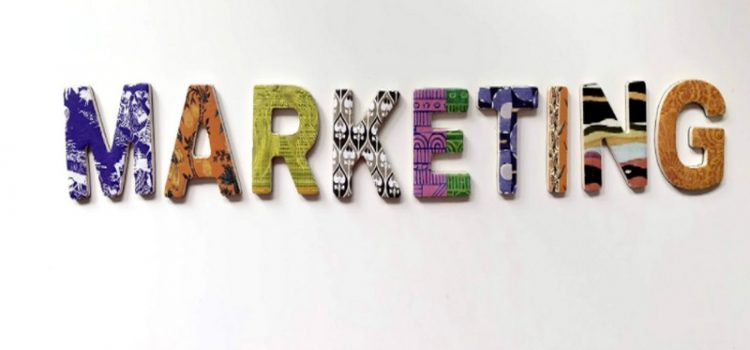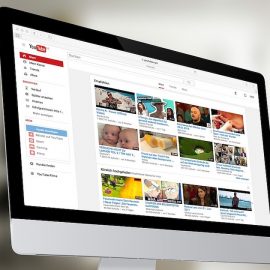

This article is an excerpt from the Shortform book guide to "Contagious" by Jonah Berger. Shortform has the world's best summaries and analyses of books you should be reading.
Like this article? Sign up for a free trial here .
What powerful marketing tactics can you find in Contagious by Jonah Berger? Why is it that some new products and ideas gain widespread popularity while others fail to “catch on”?
In Contagious, Jonah Berger argues that the driving force behind products and ideas catching on—or, in his words, becoming “contagious”—is word of mouth. Things catch on when lots of people talk about them, and Berger’s best marketing tactics will help you find out how to make that happen.
Keep reading for the best marketing tactics from Contagious by Jonah Berger.
Contagious: Jonah Berger on Marketing
How can you generate word of mouth around your product or idea? In Contagious, Jonah Berger argues that the key is making your product or idea compelling. Either the product or idea itself or its marketing campaign has to be interesting enough to get people talking.
Berger argues that to make your product or idea compelling enough to become contagious, you need to implement six key principles.
In this article, you’ll discover how to make your product or idea the subject of word of mouth. Learn how making people feel high-arousal emotions will get them talking about your product; the role discounts play in generating word of mouth; and how Kit Kat used coffee to boost their popularity.
Tactic 1: Give People Social Currency
Giving people social currency means ensuring that talking about your product or service makes people look good and therefore buys them social influence. If talking about your product or service is going to make someone seem dull, they’re probably not going to choose it as a topic of conversation.
To make your product or idea a source of social currency, you should:
- Make your product or idea remarkable
- Apply game mechanics
- Use scarcity and exclusivity
Make Your Product or Idea Remarkable
People love talking about remarkable things because doing so makes them seem remarkable, thus increasing their social currency.
You can make a product or service seem remarkable by identifying and emphasizing the thing that makes it interesting. If your product can do something that was previously thought to be impossible, or if it improves upon a traditional formula, make sure to mention this in your marketing materials.
For example, Blendtec blenders achieved Youtube fame through a series of videos blending tough objects, like golf balls and iPhones. No blender had managed such a feat before, thus making Blendtec’s products remarkable.
Apply Game Mechanics
Game mechanics are the parts of a game that measure accomplishment—for example, points systems and leaderboards. When people meet these mechanics’ requirements and “win” the game, they get the sense that they’ve achieved something.
This achievement becomes a form of social currency: something that people can brag about to impress others. When people brag, they also spread word of mouth about the product or service that gave them their sense of achievement. For instance, they mention the name of the game that they won, or tell people how fun the game is.
To apply game mechanics to your product or service and generate word of mouth, find a way to replicate the sense of achievement that people feel when they win a game. One option is to introduce a reward system in which customers unlock benefits if they use your product or service enough times. For example, airlines have “gamified” air travel by introducing frequent flier reward programs. The more a person flies with the company, the more “air miles” they collect, and the higher up the rewards hierarchy they advance.
Earning a reward is an achievement that your customers will boast about—and they’ll mention your company when they do so.
Use Scarcity and Exclusivity
Making a product or service scarce and exclusive gives social currency to the people who do manage to get hold of it. These customers seem “special” because they’ve accessed something that’s out of reach to a lot of people. When bragging about their “special” status, these customers will spread word of mouth about the scarce or exclusive thing they’ve bought.
To add the perception of scarcity to your product, give the impression that it’ll be difficult to get hold of. For example, you could tell customers that you expect the product to sell out quickly. Meanwhile, to add exclusivity to your product or service, create the perception that only a select few people can access it. For instance, you could make access to your product or service “members only.”
An example of a business that thrived after adding scarcity and exclusivity to its products is Rue La La, a website that sells discounted designer items. When the website was founded in 2008, its CEO decided to only sell goods during “flash sales” that lasted for a day or two. This created an impression of scarcity. To access the sales, customers had to be invited by an existing user of the site. This generated a sense of exclusivity.
Because of this scarcity and exclusivity, gaining access to Rue La La’s products became a form of social currency. Its members bragged about their use of the site, spreading the word about its existence in the process. The result was Rue La La quickly increasing its customer base.
Tactic 2: Create Effective Triggers
A trigger is a stimulus that reminds you of something else. For example, smelling food as you walk down the street might remind you that you need to grab some lunch.
If you can link your product or idea to a trigger, you can ensure that people are driven to think about it a lot. For example, if you’re promoting a new type of ice cream and associate it with sunny weather in your marketing materials, whenever it’s sunny, people will be triggered to think about your product. This will help to generate word of mouth because people tend to talk about whatever’s on their mind in a given moment.
How to Create Effective Triggers
For a trigger to be effective in making people think and talk about your product or idea, it needs to have the following five qualities:
- It needs to activate frequently. The easiest way to ensure this happens is to make your trigger a stimulus that people will encounter a lot in their everyday lives. For example, Budweiser successfully used the word “wassup” as a trigger in one of its marketing campaigns. This was an exclamation used a lot by young men at the time of the campaign’s release, and was therefore a trigger that the product’s target audience encountered frequently.
- It needs to have long-term relevance. If your trigger quickly disappears from public view, people will swiftly stop thinking and talking about your product. However, if people will keep encountering your trigger weeks, months, or years into the future, it’ll keep generating word of mouth. For example, Kit Kat made drinking coffee its trigger. This trigger has long-term relevance because people will probably drink coffee for years to come.
- It needs to activate close to where people can act on it—for example, close to a shop where people can buy your product, or near a place where they can easily talk to other people about it. If the trigger activates too far away from these places, people will forget about your product before they can buy or talk about it.
- It needs to be as unique as possible. If you choose a trigger that’s been used before, people will think of the previously linked products or ideas rather than yours. For example, if you choose the color red as your trigger, people are going to think about things like Coca Cola and Santa Claus before they think of your product.
- It needs to be relevant to your target audience’s environment—specifically, their geographical area. For example, there’s no point using palm trees as a trigger if your target audience is professionals living in New York City. These people are very rarely going to encounter a palm tree, meaning they’re rarely going to be triggered to think about your product.
Once you’ve created an effective trigger, use marketing materials to consistently and frequently link your product to your trigger. This will ensure that people strongly connect the two concepts in their minds, increasing the chance that the trigger makes them think of the product.
Tactic 3: Generate an Emotional Response
When people get emotional, they like to talk about how they’re feeling. When they do this, they share details about what made them so emotional in the first place. Therefore, if you can make your product or idea trigger an emotional response, you’ll get people talking not only about their feelings but about your product or idea, too.
For example, in 2008, the writer Denise Grady got people talking about an outwardly dry scientific article about fluid dynamics by including an image that generated an emotional reaction. The image was of a person coughing, but it was captured using a new technology that showed a huge, visible plume of air emanating from the person’s mouth. The image inspired awe in people, leading them to share the article with others.
A caveat to this principle is that not all emotions are effective at getting people to discuss your product or idea. Only emotions that generate high amounts of physiological arousal push people to talk about how they’re feeling. Physiological arousal is, in simple terms, your body being readied for action. Signs of physiological arousal include a racing heart and sweaty palms.
People respond to physiological arousal in various ways. They may jump up and down on the spot, or pace back and forth. Crucially, they may also rush to tell others about the source of their arousal—the thing that’s got them so fired up. Therefore, if you make your product or idea a source of high physiological arousal, you’ll get people talking about it and generate word of mouth.
So which emotions generate high physiological arousal and which don’t? According to Jonah Berger, the five main high-arousal emotions are anger, anxiety, awe, amusement, and excitement. Meanwhile, low-arousal emotions include sadness and contentment.
Adding Emotion to Your Product or Idea
How can you add high-arousal emotions to your product or idea? The key to doing this is devising a feelings-based marketing strategy. Rather than using your marketing materials to bombard consumers with information, give them the bare basics about your product or idea and focus the rest of your marketing efforts on making them feel a high-arousal emotion.
For instance, you could focus on adding humor to your brand’s slogan, TV ads, or radio spots. This will help you generate amusement in your potential customers. An example of a company that did this successfully is Old Spice. In 2008, it amused its customers by making its tagline “If your grandfather hadn’t worn it, you wouldn’t exist.”
Tactic 4: Create Public Visibility
For a product to be contagious, Jonah Berger argues, products or ideas must be publicly visible. People aren’t going to talk or even think about your product or idea if they never come across it in the first place. However, if people encounter your product or idea a lot, they’re likely to start thinking about it a lot, too.
There are two ways to increase the visibility of a product or idea. These are making the private public and making your product advertise itself.
Making the Private Public
Making the private public means finding a way to make it publicly clear that people use your product or support your idea, even when this information would usually be private.
Some purchasing decisions are naturally publicly observable. For example, it’s clear which cars people buy because they drive these vehicles around in public. However, other choices are more private. For instance, it’s not usually publicly obvious which makeup products people buy because they apply makeup in the privacy of their own home. Therefore, makeup brands may struggle to generate the word of mouth that comes from a product’s use being publicly visible.
To get people talking about a product or cause that’s usually kept private, find a way for people to display that they’re buying your product or supporting your idea. One way to do this is to send your customers or supporters a “free gift” that they can use in public. For example, a makeup company could send customers a branded tote bag. When the customer uses the bag in their daily life, it will make their usually private purchasing decision public. It adds the visibility that’s crucial in generating word of mouth about a product.
Making Your Product Advertise Itself
Making your product advertise itself means visibly including your branding on your product so that people can immediately see who’s made it. For example, make your logo or tagline visible on the product. That way, when people see others using your product, they’ll learn about the existence of your brand. Examples of famous brands that do this include Nike, Lacoste, and Apple.
If people start to see your branded products a lot, this may become a talking point. For instance, people might start to comment on the fact that the brand seems popular, or ask their friends if they’ve heard of this newly visible brand. This generates word of mouth.
Behavioral Residue
No matter which of these two tactics you choose to employ, there’s an extra requirement you must factor in. Make sure that your product or idea remains visible for a long time. If you don’t, people will quickly forget that the product or idea exists. The process of making visibility long-lasting is often referred to as adding behavioral residue.
If you try to make the private public, add behavioral residue by making sure that the thing that publicizes your product or idea is durable enough for long-term use. For the makeup company that gives customers branded tote bags, those bags need to be high-quality enough to be used for months or years. Only then will the brand remain visible for a long time.
If you try to make products advertise themselves, ensure that these products are of good-enough quality that people keep using them. The product won’t generate visibility if it’s thrown to the back of a cupboard and never used.
Tactic 5: Provide Practical Value
People love gathering useful and practical information that will make their lives easier—for example, money-saving tips or so-called “life hacks.” They also love sharing this information with others. Therefore, if you make your product or service a source of practical value, people will talk about it because they’ll want to share its value with others. In short, you’ll generate word of mouth.
There are two ways to add practical value to your product or service:
- Create an amazing discount and apply it to your product or service.
- Provide useful information to your customers once they’ve bought your product or service.
Create an Amazing Discount
The first way to add practical value to your product or service is to give it an amazing discount. If your product or service is a real money-saver, people will want to tell their loved ones about it.
To make your discount truly amazing, there are four principles to keep in mind. First, make your discount big. People are more likely to tell their loved ones about a big discount than a small one because the former is perceived as much more helpful. Telling someone about a 5% discount won’t save them that much money. However, telling them about a 50% discount will help them to make a big saving.
Second, limit the availability of the discount. Make it scarce and exclusive. For example, create a discount that’s “store members only” or only available for a limited time. Scarce and exclusive discounts appear much more valuable to customers. People tend to think that a deal must be really good if a store limits access to it. Likewise, they’re more likely to tell other people about a discount that they think is valuable.
Third, apply the Rule of 100. This rule states that if a product’s original price is under $100, a percentage-based discount—for instance, 30% off—will appear more attractive to customers. Likewise, if a product’s original price is above $100, a numerical discount—for example, $50 off—will impress customers more. If you apply this rule when creating your discount, you can maximize its attractiveness and increase the likelihood that it’ll be shared.
Finally, make your discount obvious. For instance, put stickers on items to indicate to customers that they’re on sale. As you learned in Principle #4, things need to be publicly visible if people are going to share information about them. Discounts are no exception to this.
Provide Useful Information
The second way to add practical value to your product or service is to provide useful information to your customers. Send them advice or practical tips that will make their life easier in some way. For example, if you’re a financial services company, send your customers a newsletter with money-saving tips.
When your customers receive this information, they’ll pass it on to friends or family members who they think would benefit from it. In the process of doing so, they’ll inform other people that your company exists. They’ll spread word of mouth about your business.
Remember that people are inundated with information every day. For instance, they probably receive multiple daily email newsletters. Make sure that your information stands out so that people choose to read and share your practical tips, not those sent to them by other people.
You can maximize your information’s sharing potential by making it concise and accessible. Don’t send people a three-page essay full of useful information. Instead, limit the information you send to three or four simple yet engaging points. People are much more likely to read and share information if it’s bite-sized. Likewise, make sure that the information you send is relevant to your target audience. For instance, ensure it’s suitable for their age range and location.
You can also make information more shareable by making it relevant to only a small group of people rather than to everyone. For example, instead of sending out generic financial tips, send out targeted tips for first-time buyers. Berger argues that your customers may be more inclined to share information that seems relevant to just a few people they know. Because the information seems to be uniquely suited to these few people, the customer feels like they just have to share it with them.
Tactic 6: Tell People a Story
In Contagious, Jonah Berger emphasizes the importance of good story-telling in marketing. Use your marketing materials to tell people a story. Specifically, weave information about your product or idea into a gripping narrative that grabs people’s attention. For example, you could embed factual information about your product into a heartwarming story about how using it changed someone’s life.
Incorporating information about your product or idea into a narrative increases word of mouth because people love passing on interesting stories. Doing so is a much more socially acceptable way of sharing information than spouting boring facts and figures at people. Therefore, if you use your marketing materials to tell an exciting story, people will pass that story on—and they’ll pass on information about your product or idea in the process. In short, they’ll generate word of mouth.
Telling the Right Kind of Story
You can’t just incorporate information about your product or idea into any story and expect that story to automatically generate word of mouth. You need to tell the right kind of story: one that’s actually effective at getting people talking about your product or idea.
First, make sure the story implements some of the other principles we’ve discussed. For instance, make your story remarkable enough to become a source of social currency. Make it a source of a high-arousal emotion such as awe or amusement. Include some practical information about your product in your story to ensure it has practical value. If your story has these attributes, it’s more likely to be passed on.
Second, make sure that people can’t omit the information about your product or idea when they retell the tale. When people pass on a story, they only share the information that they consider to be crucial to the narrative. If the information about your product or idea doesn’t seem that important to the story, they’ll cut it out. To prevent this from happening, make your product or idea so crucial to the narrative’s progression that people can’t help but mention it when they retell the tale. If they didn’t do so, the story would become completely nonsensical.
Follow the example of the Egyptian dairy brand Panda, which made a man in a panda costume a key character in its TV ad’s story. People couldn’t tell this commercial’s story without mentioning this character, and couldn’t explain why the man was wearing a panda costume without telling people that the creator of the ad was Panda. In short, people couldn’t recount the story of the commercial without spreading word of mouth about the company that created it.
The above key marketing tactics from Contagious by Jonah Berger will help to get people talking about your product.

———End of Preview———
Like what you just read? Read the rest of the world's best book summary and analysis of Jonah Berger's "Contagious" at Shortform .
Here's what you'll find in our full Contagious summary :
- Why some new products and ideas gain widespread popularity while others fail
- The six principles to making your product or idea contagious
- The importance of word of mouth in marketing






